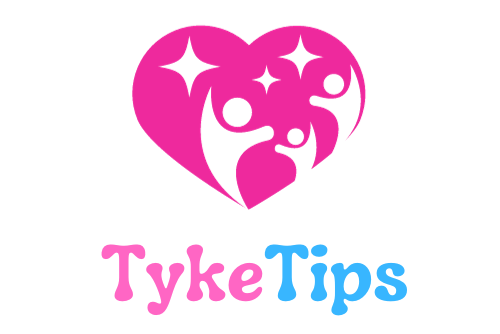Are you struggling to stop your toddler from hitting? It’s a common behavior in toddlers, but it’s important to address it. In this article, we will provide you with simple and effective strategies to put an end to hitting behavior. First, it’s crucial to take care of yourself and regulate your own emotions. Set a firm and simple limit on hitting and remain calm when interacting with your child. Connect with your child empathetically, understand their needs, and model appropriate strategies to replace hitting. By following these steps, you can help promote your toddler’s development and well-being.
On today’s episode of Live On Purpose TV, we’re going to discuss how to get toddlers to stop hitting. Hitting is a common and age-typical behavior in toddlers, but it’s still important to address it. We’ll provide you with practical steps to help you deal with hitting behavior effectively. So, sit back, relax, and let’s dive into these strategies to create a positive and peaceful environment for both you and your child.
Why Do Toddlers Hit?
Hitting is a common behavior in toddlers, but it is not desired. Toddlers may hit due to developmental changes and lack of emotional regulation skills. Understanding the reasons behind their hitting behavior can help parents and caregivers address it effectively.

Developmental Changes
Toddlers go through rapid developmental changes, and these changes can affect their behavior. During this time, they may experience frustration and a lack of communication skills, leading them to hit as a way to express themselves. It is important to remember that hitting is a normal part of their development, but it still needs to be addressed in order to encourage positive behavior.
Lack of Emotional Regulation Skills
Toddlers have not yet developed the emotional regulation skills that adults have. They may struggle to control their emotions and resort to hitting as a way to release their frustration or communicate their needs. Teaching them alternative coping mechanisms and providing emotional support can help them learn healthier ways to navigate their emotions.
Taking Care of Yourself
As a parent or caregiver, it is essential to take care of your own emotions when dealing with a hitting toddler. Regulating your own emotions will allow you to respond calmly and effectively to the situation. Remember the analogy of putting your own oxygen mask on first before assisting others. Taking care of yourself is not selfish; it is necessary for providing the support and guidance your child needs.
Regulate Your Own Emotions
Identify your own triggers and find healthy ways to manage them. Practice self-care techniques such as deep breathing, taking breaks when needed, and seeking support from others. When you are calm and composed, you can better respond to your toddler’s hitting behavior with empathy and understanding.
Setting Firm Limits
Establishing clear rules and boundaries is crucial when addressing hitting behavior in toddlers. By setting firm limits, you teach your child what is acceptable behavior and what is not. Consistency is key in enforcing these boundaries and ensuring that they understand the consequences of hitting.
Establish Clear Rules
Sit down with your toddler and explain the rules regarding hitting. Keep the language simple and clear, using age-appropriate terms. Reinforce these rules consistently and remind them of the consequences if they choose to hit.
Consistency is Key
Toddlers thrive on routine and predictability. Consistently enforcing the rules and consequences will help them understand the expectations and reduce their desire to hit. Be consistent in your response to hitting behavior, regardless of the situation or setting.
Interacting Calmly
Remaining calm during interactions with your child is crucial. Reacting aggressively or with anger can escalate the situation and reinforce negative behaviors. By adopting a soft tone of voice and a calm demeanor, you create a safe and supportive environment for your toddler.
Remain Calm
Take a deep breath and remind yourself to stay calm, even in challenging situations. Remember that your toddler is still learning and may not have the same coping skills as adults. Maintaining a calm presence will help diffuse tension and encourage healthier communication.
Avoid Reacting Aggressively
Reacting aggressively or responding with anger will only escalate the situation. Instead, focus on addressing the behavior with empathy and understanding. This approach helps your child feel safe and supported, fostering a positive parent-child relationship.
Use Soft Tone of Voice
Using a soft tone of voice conveys a sense of calm and reassurance to your toddler. Choose your words carefully, speaking in a gentle and understanding manner. This approach helps your child feel heard and understood, reducing the likelihood of hitting.
Connecting with Empathy
Understanding your toddler’s needs and validating their emotions are crucial steps in addressing their hitting behavior. By connecting with empathy, you create a strong bond and provide the emotional support they need to navigate their feelings.
Understand Their Needs
Take the time to understand why your toddler may be hitting. Are they frustrated, seeking attention, or feeling overwhelmed? By identifying their needs, you can address the root cause of their hitting behavior and find more appropriate ways to fulfill those needs.
Validate Their Emotions
Acknowledge your toddler’s emotions and let them know that it is okay to feel angry, frustrated, or upset. Avoid dismissing or trivializing their emotions, as this may exacerbate their hitting behavior. Validating their emotions helps them develop emotional intelligence and builds trust between you and your child.
Provide Emotional Support
Offer comfort and support when your toddler is feeling upset or frustrated. This can be as simple as offering a hug, a gentle touch, or a kind word. Providing emotional support helps your child feel safe and loved, promoting positive emotional development.
Modeling Appropriate Strategies
Modeling appropriate strategies is an effective way to help your toddler learn healthier alternatives to hitting. By demonstrating gentle touch, encouraging verbal expression, and teaching problem-solving skills, you can guide your child towards positive behavior.
Use Gentle Touch
Demonstrate to your toddler the power of gentle touch. Show them how to express their emotions without resorting to hitting. Encourage them to use gentle gestures, such as hugging or high-fiving, to communicate their emotions.
Encourage Verbal Expression
Teach your toddler to use words to express their needs and emotions. Encourage them to communicate their frustrations, desires, or concerns through age-appropriate language. By promoting verbal expression, you empower your child to communicate effectively and reduce their reliance on hitting.
Teach Problem-Solving Skills
Help your toddler develop problem-solving skills by offering guidance and support. Teach them how to identify the problem, explore possible solutions, and choose the best course of action. By equipping them with problem-solving skills, you empower them to find alternative ways of resolving conflicts or expressing themselves.
Creating a Safe Environment
Creating a safe and supportive environment is essential when addressing hitting behavior in toddlers. By removing triggers and teaching alternative coping mechanisms, you can minimize the likelihood of hitting and promote healthier behaviors.
Remove Triggers
Identify any triggers that may contribute to your toddler’s hitting behavior. These triggers could be specific toys, situations, or interactions. Minimize exposure to these triggers, or find ways to modify them to reduce your child’s frustration and aggression.
Teach Alternative Coping Mechanisms
Provide your toddler with alternative coping mechanisms to replace hitting. Offer them tools, such as deep breathing exercises or sensory toys, to help regulate their emotions. Teaching healthier coping skills empowers your child to manage their emotions in a more constructive way.
Positive Reinforcement
Using positive reinforcement is an effective way to encourage and reinforce good behavior in toddlers. By praising their good behavior and using rewards and incentives, you can motivate your child to choose positive alternatives to hitting.
Praise Good Behavior
Recognize and acknowledge your toddler’s good behavior. Offer specific and genuine praise when they demonstrate positive alternatives to hitting. This positive reinforcement reinforces their understanding of what is expected of them and encourages them to continue making good choices.
Use Rewards and Incentives
Consider using rewards and incentives to motivate your toddler to choose positive behaviors. This can be as simple as sticker charts or small treats as a reward for consistently not hitting. Be mindful of the rewards you choose and ensure they align with your parenting values.
Seeking Professional Help
In some cases, hitting behavior in toddlers may require professional intervention. If your child’s hitting persists despite your efforts, it may be beneficial to seek guidance from a pediatrician or therapist. These professionals can provide additional strategies and support to address your toddler’s behavior effectively.
Recognize When to Seek Help
Trust your instincts and recognize when your efforts alone are not producing the desired results. If your toddler’s hitting behavior is causing significant distress or negatively impacting their well-being, it is important to seek professional help. Early intervention can facilitate positive behavior change and support your child’s overall development.
Consult with Pediatrician or Therapist
Consulting with a pediatrician or therapist can provide valuable insights and guidance tailored to your child’s specific needs. These professionals can assess any underlying factors contributing to the hitting behavior and recommend strategies to address it effectively.
Conclusion
Addressing hitting behavior in toddlers requires patience, understanding, and proactive parenting strategies. By understanding the reasons behind their hitting, taking care of yourself, setting firm limits, interacting calmly, connecting with empathy, modeling appropriate strategies, creating a safe environment, using positive reinforcement, and seeking professional help when needed, you can guide your toddler towards healthier behaviors. Remember, stopping hitting behavior in toddlers is important for their development and well-being.

